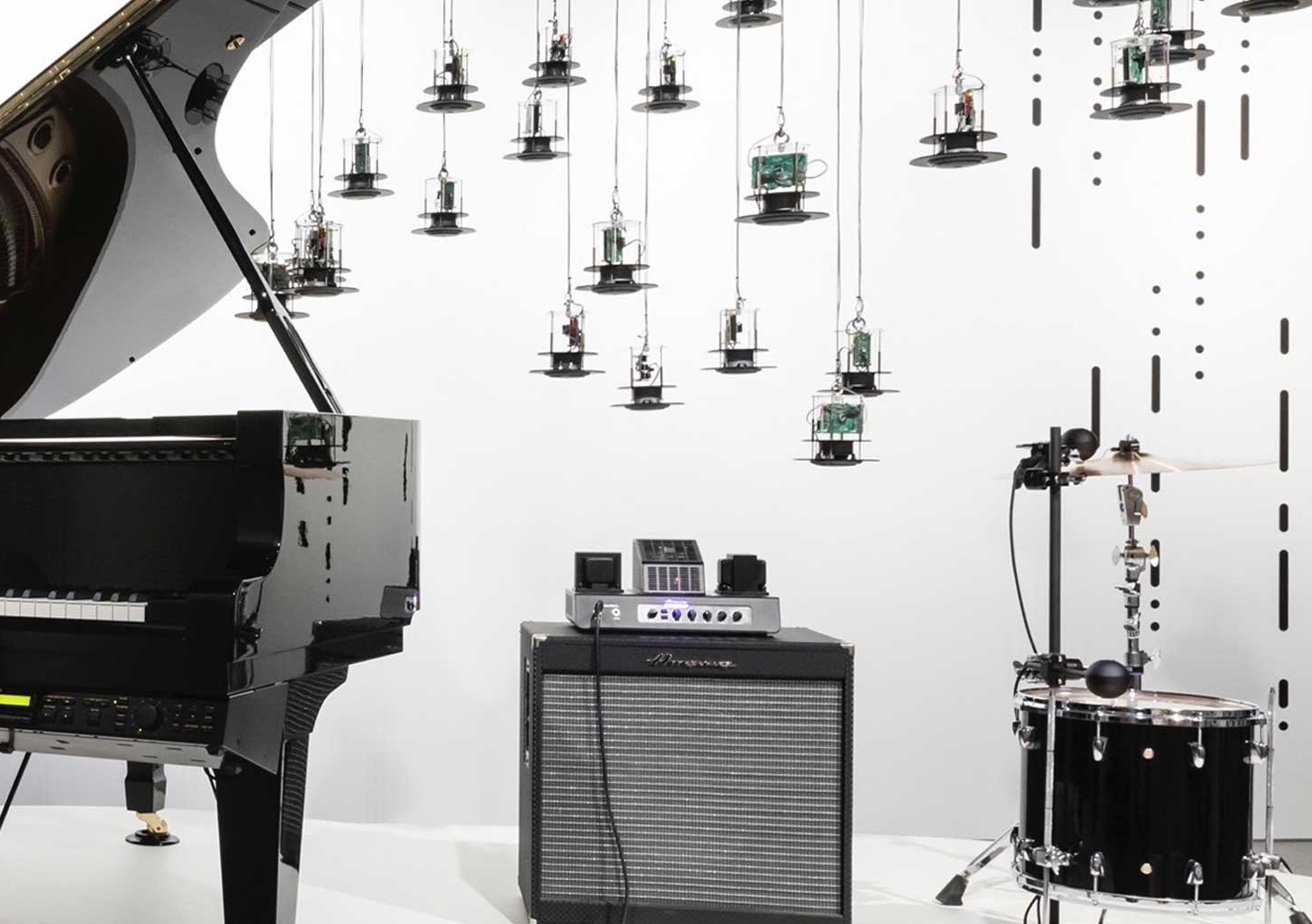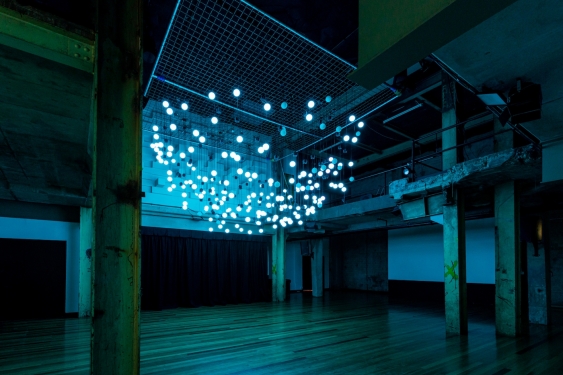The new digital platform simplifying sound design for creatives
A creative coding toolkit co-designed by a UNSW researcher supports the creation of intricate sound installations.
A creative coding toolkit co-designed by a UNSW researcher supports the creation of intricate sound installations.

An innovative sound design platform makes sound design accessible for creative industries by simplifying the coding required for complex sound installations.
The creative coding toolkit, HappyBrackets, supports the networking of audio devices in sound installations, making them more accessible, affordable and scalable. It creates new opportunities for using sound to enhance commercial façades and foyers, creative arts venues and other public spaces.
Associate Professor Oliver Bown from UNSW’s School of Art & Design developed the platform in collaboration with colleagues from UTS, electronics producers Bitscope Designs, and leading media arts collective Squidsoup.
Sound can enhance an atmosphere in nuanced ways, creating compelling artistic and interactive environments, A/Prof. Bown says. The platform, which is open source for public use, has the potential to broaden the use of sound installations and improve their complexity.
“While there are lots of off-the-shelf options for light installations, the sound is a different kettle of fish. Sound is quite a high-resolution medium,” A/Prof. Bown says.
“The purpose of the platform we’re making is to enable someone to really easily and scalably design a large distributed light and sound artwork for a space and design the content for that in an easy way. We’re making that as simple as possible, so you don’t have to have a computer science PhD to do it.”
Read more: Architecture and the senses: sound, music and more
A/Prof. Bown is a practice-led researcher, electronic music producer and digital artist who works with creative technologies. His interest is in how artists, designers and musicians can use advanced computing technologies, such as AI and evolutionary systems, to produce complex creative works.
“My skill is largely in the creative design itself,” he says, “but I’m using that skill to do the user research and design conceptualisation to work out what makes something really useful for an artist.”
The HappyBrackets project creates media architecture and art installations, interactive performances, tactile gallery and festival experiences and interactive toys. It lends itself to use in art galleries, museums, commercial venues, theatres, and event and public spaces.
“Basically, there’s one ginormous pain point with doing any work like this, which is that you just get completely stuck in technical problem-solving. So, we want to remove that,” A/Prof. Bown says.
The digital platform allows the user to set up and program multiple Distributed Interactive Audio Devices (DIADs) devices from a single computer. It enables the user to write simple computer programs that send messages to control networks of audio devices remotely over WiFi.
Programs can be written to respond to environmental factors within the installation measured via built-in sensors in DIADs. For example, used in an interactive performance, gently moving an audio device might trigger one sound response, while shaking it or detecting a change in light intensity might trigger another. A speaker then plays the sounds as dictated by the program written in HappyBrackets
“If you get a big loudspeaker and pump lots of sound out of it, then that’s a very intense sound source. “[But if you] get lots and lots of tiny speakers, then they don’t need to be very loud at all,” A/Prof. Bown says.
“You can fill a room with sound in a much more even way – and a much more managed way – so you can more precisely define where the sound is located in a space. So you could make less annoying and more possibly beguiling installations where listeners discover sound sources.”
The HappyBrackets team are hoping to develop more readymade tools within the platform for use in live music performances. In this case, the platform would operate “like a big synthesiser,” A/Prof. Bown says. “You can plug your computer into it and send it messages and control it.
“You can play notes on it; you can choose what sound it plays; you can change the parameters of the sound. But then, in addition, it’s spatial, so you can choose how the sound is moved around the space and distributed. And then likewise you can also say what the lights are going to do.”

Sound has the potential to become as highly valued as light within media art and architecture, says A/Prof. Oliver Bown. Photo: Chantel Bann, courtesy of Casula Powerhouse.
Read more: Sound, art and the sense
A/Prof. Bown is currently working on an interactive sound and light installation using the platform titled Speech Bubble, commission for the Casula Powerhouse Arts Centre.
“It’s just a giant cloud of lights and speakers in the shape of a speech bubble,” he says. “It’s a vocal play instrument, so you can sing a note into it, and it fires off a sound and light response like a firework or a pinball machine. It fires off this chain reaction of vocal sounds…it’s evocative of vocalisation, and the sound and rhythm of speech.”
A/Prof. Bown and the HappyBrackets team are also currently developing a 120-speaker system for a theatre company that is mounting an immersive voice-based sound installation in Melbourne. They are also exploring commercial development for additional support resources, services, and end-user products.
Bruce Tulloch from BitScope says immersive sound is at the cutting edge of creative research in interactive multimedia.
“We believe research and industry partnerships like this are key to leveraging the collective expertise required to deliver innovative and deployable solutions for the creative industries.”
A/Prof. Bown says there will be growing demand for technology to help develop bespoke immersive sound installations.
“I think there’s a huge potential for [sound] to become more and more common as a type of media installation… and [ultimately] become as highly valued as light within media art and architecture.”